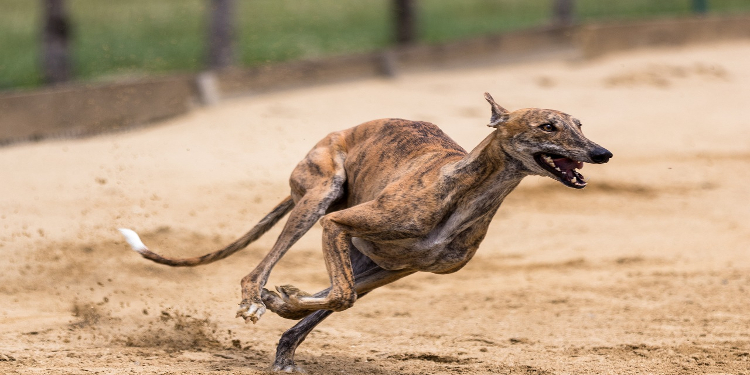Greyhound racing has long been a recognised sport in various countries, offering spectators a fast-paced and structured competition. With a focus on speed and agility, greyhounds race over set distances, and many spectators follow these events for both the sport itself and the strategic elements involved.
If you’re a newcomer to the world of greyhound racing, this guide is a great place to start to understand the fundamentals, its origins, and how individuals engage with it.
The History of Greyhound Racing
The origins of greyhound racing can be traced back centuries, with early forms of dog racing present in several ancient cultures. However, the sport as it is known today developed in the early 20th century, beginning in the United States. The first modern greyhound track, which was named Emeryville in California, opened in 1919, before making way for the construction of a modern racetrack, including the format of using a mechanical lure to simulate the chase. This was then quickly adopted in different nations across the globe, including the United Kingdom.
The sport was introduced in a structured way to provide a safe, regulated form of competition for the dogs, and greyhound racing in the UK ultimately became a vastly popular scene with the opening of professional tracks in the 1920s. The first official greyhound race in the UK took place at Belle Vue Stadium in Manchester in front of 1700 spectators. Today, in line with attendance, the popularity has declined. However, there is still a presence in several countries, with greyhound tracks operating in Ireland and Australia, among others.
How Greyhound Racing Works
Greyhound racing typically involves six greyhounds competing on an oval track but can extend to eight at particular venues, with each dog racing to finish first. Here is an overview of the key components:
The Track
Greyhound tracks are designed with performance in mind, featuring either synthetic or grass surfaces that provide optimal traction and speed for the dogs. The oval shape allows spectators a clear view of the entire race while the mechanical lure, usually resembling a hare, runs just ahead of the dogs to simulate the natural chase instinct. The greyhounds, driven by their predatory nature, sprint after the lure with remarkable intensity, making each race a test of agility and speed.
The Greyhounds
Central to the sport, greyhounds are specifically bred for speed. They are known as one of the fastest dog breeds and can reach a speed of up to 45 miles per hour, calculated as 72 km/h. Their physical characteristics: long, lean bodies, powerful hind legs, and deep chests adapt seamlessly for sprinting. They are typically trained from a young age for short, high-intensity bursts of speed, focusing on building the strength and stamina needed for races ranging from a couple hundred to several hundred metres.
Race Format
Greyhound races vary in distance, with common lengths ranging from 400 to 800 metres, though some tracks may offer shorter or longer distances. The greyhounds are positioned in numbered traps at the start of the race, which open simultaneously when the mechanical lure passes by. Once released, the dogs chase the lure around the track, striving to reach the finish line first. The races are short, usually lasting less than a minute, adding to the intensity and excitement of the event.
Greyhound Racing and Betting
Wagering on races has always been a common and popular part of the sport. Going back to the 1920s, the system of Totalisator betting (commonly known as Tote betting), which pools wagers and divides the pot among the winners, was established. This system allowed for more organised betting at the tracks, as opposed to the informal wagering that had previously occurred in earlier forms of the sport, such as coursing (where dogs chased live hares). Tote betting provided a fairer system for both spectators and operators, laying the foundation for structured wagering that could accommodate a larger audience.
Greyhound racing, along with betting on the sport, reached its peak in the mid-20th century, particularly after World War II. In the UK, the 1940s and 1950s saw a massive rise in attendance at greyhound tracks and betting volume. At its height, there were over 70 tracks in the UK alone, and betting shops often saw large crowds gather to place wagers on races across the country. Off-track betting during this period became more prominent, as people could place bets without being at the track itself. Betting shops were legalised and opened in the UK in 1961, increasing the accessibility of greyhound racing for bettors.
As technology evolved, so did how individuals could engage with greyhound racing. The advent of televised races in the 1980s and the rise of digital platforms in the 2000s brought greyhound racing to a wider audience and allowed betting to adapt to modern preferences.
Today, greyhound racing remains a fixture in the betting world, though its popularity has fluctuated in comparison to other sports. In some regions, the number of active tracks has decreased, but greyhound racing continues to draw a dedicated following, particularly in the UK, Ireland, and Australia.
Betting structures remain largely the same, with options like win, place, forecast, and tricast bets still widely available. In addition to traditional trackside or shop-based betting, online platforms have expanded the options for bettors, offering more detailed data, analysis, and tools for those looking to place informed bets on greyhound races. An each way bet calculator could be utilised in these instances, too, to aid the overall strategy of a bettor.
While betting remains an important aspect of the sport, there has been a growing focus on animal welfare in recent years. This has led to increased regulation and oversight within the industry to ensure that both greyhound racing and associated betting practices operate responsibly. These measures include regular health checks for the dogs, strict rules on training and racing conditions, and the provision of post-racing care for retired greyhounds, addressing potential ethical concerns and maintaining trust in the sport.
Major Greyhound Racing Events
Several major greyhound racing events are held annually, attracting widespread attention from spectators. These events include:
English Greyhound Derby
The English Greyhound Derby is a prominent racing event held annually in the UK. While often confused with the Greyhound Derby, it is a separate competition with its own historical importance and significance. The event traditionally features some of the top greyhounds from the UK, Ireland, and occasionally other regions, with races taking place over a set number of rounds.
Similar to the Greyhound Derby, the English Greyhound Derby has been hosted at various tracks throughout its history. After being held at Wimbledon Stadium for many years and Nottingham Greyhound Stadium recently, it is now held at the Towcester Greyhound Stadium in Northamptonshire. The event continues to serve as one of the sport’s most competitive and celebrated races.
The Melbourne Cup
The Melbourne Cup is one of Australia’s most famous greyhound races and is considered one of the richest in terms of prize money. Held at Sandown Park in Victoria, the Melbourne Cup has a long-standing reputation for attracting the country’s top greyhounds.
The Melbourne Cup is not only a significant sporting occasion but also a social highlight, with large crowds gathering to witness the races. It is often regarded as a marquee event in the Australian greyhound racing scene, and winning the cup is considered a major achievement for any greyhound and its trainer.
Irish Greyhound Derby
The Irish Greyhound Derby is a significant event in greyhound racing and it is held annually at Shelbourne Park in Dublin. As one of Ireland’s most prestigious races, it attracts top greyhounds and trainers nationwide and internationally. The competition follows a multi-round format, culminating in an intense final where competitors vie for top honours.
Since its inception in 1928, the Irish Derby has grown in stature. Known for its vibrant atmosphere and competitive nature, it consistently features closely contested races, similar to its English counterpart. The event remains a highlight for greyhound racing enthusiasts, drawing spectators from Ireland and abroad.
Conclusion
Greyhound racing has evolved with technological advancements while rooted in tradition, allowing for wider accessibility through televised and online platforms. Despite shifts in popularity over the years, the sport still attracts a dedicated in-person following. As greyhound racing moves forward, the balance between maintaining its competitive edge and ensuring responsible practices remains a focus, shaping the future of this distinctive and dynamic sport.
David Prior
David Prior is the editor of Today News, responsible for the overall editorial strategy. He is an NCTJ-qualified journalist with over 20 years’ experience, and is also editor of the award-winning hyperlocal news title Altrincham Today. His LinkedIn profile is here.













































































